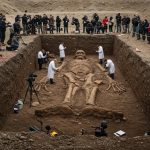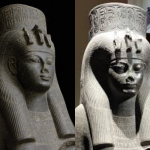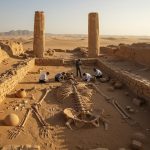Colima Standing Ballplayer Figure
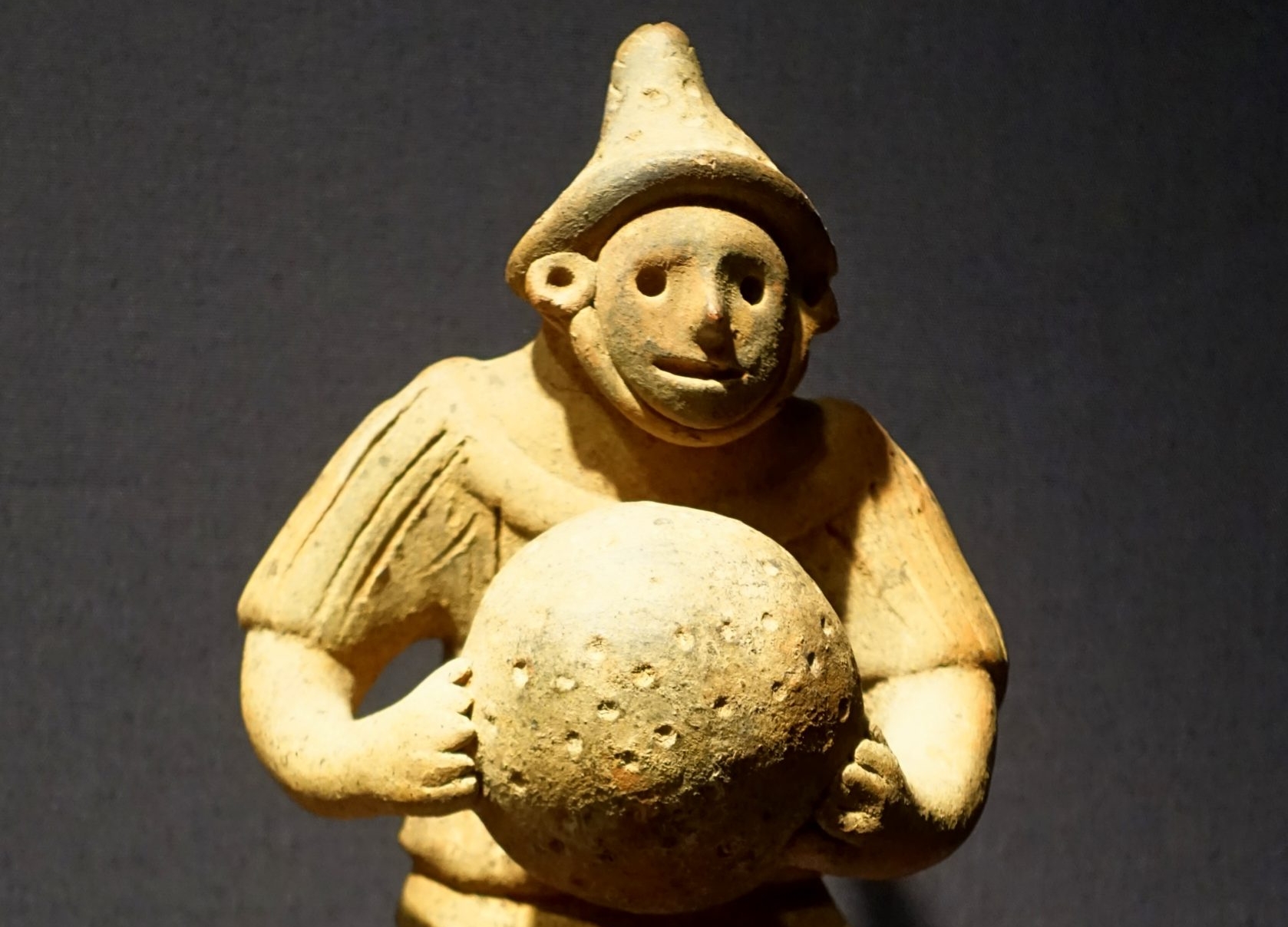
This Colima ceramic figure from western Mexico dates to the Late Formative period (ca. 300 BC–300 AD) and represents a standing ballplayer equipped for the ancient Mesoamerican ballgame. The figure is shown in a dynamic pose, legs bent and body leaning slightly forward, suggesting readiness for action. He holds a large ball against his torso, emphasizing his role in the game.
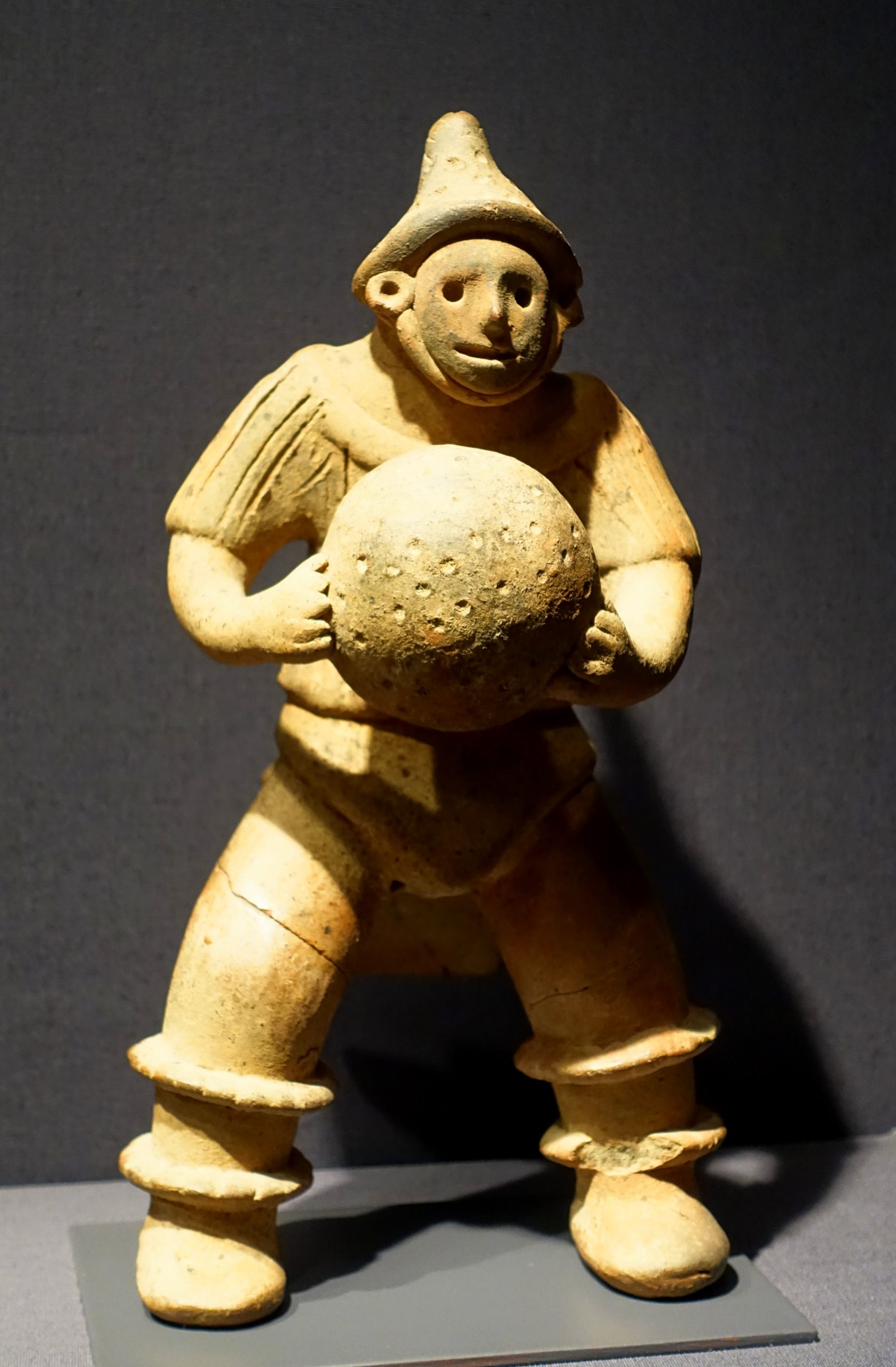
The ballplayer wears a distinctive ceremonial mask with round eyes and an expressive, almost playful mouth—an element that may have had ritual significance or been used to personify a supernatural being associated with the game. His conical helmet and protective gear around the limbs reflect the specialized equipment required for participating in this physically demanding sport, which involved striking a heavy rubber ball using the hips and body.
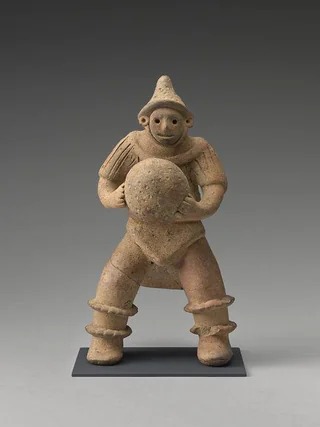
In Colima and the broader region of West Mexico, such figures were often placed in shaft tombs, where they served as symbolic guardians, representations of status, or depictions of important community rituals. The ballgame itself held deep cultural significance across Mesoamerica, linked to themes of fertility, cosmic renewal, and the balance between life and death.
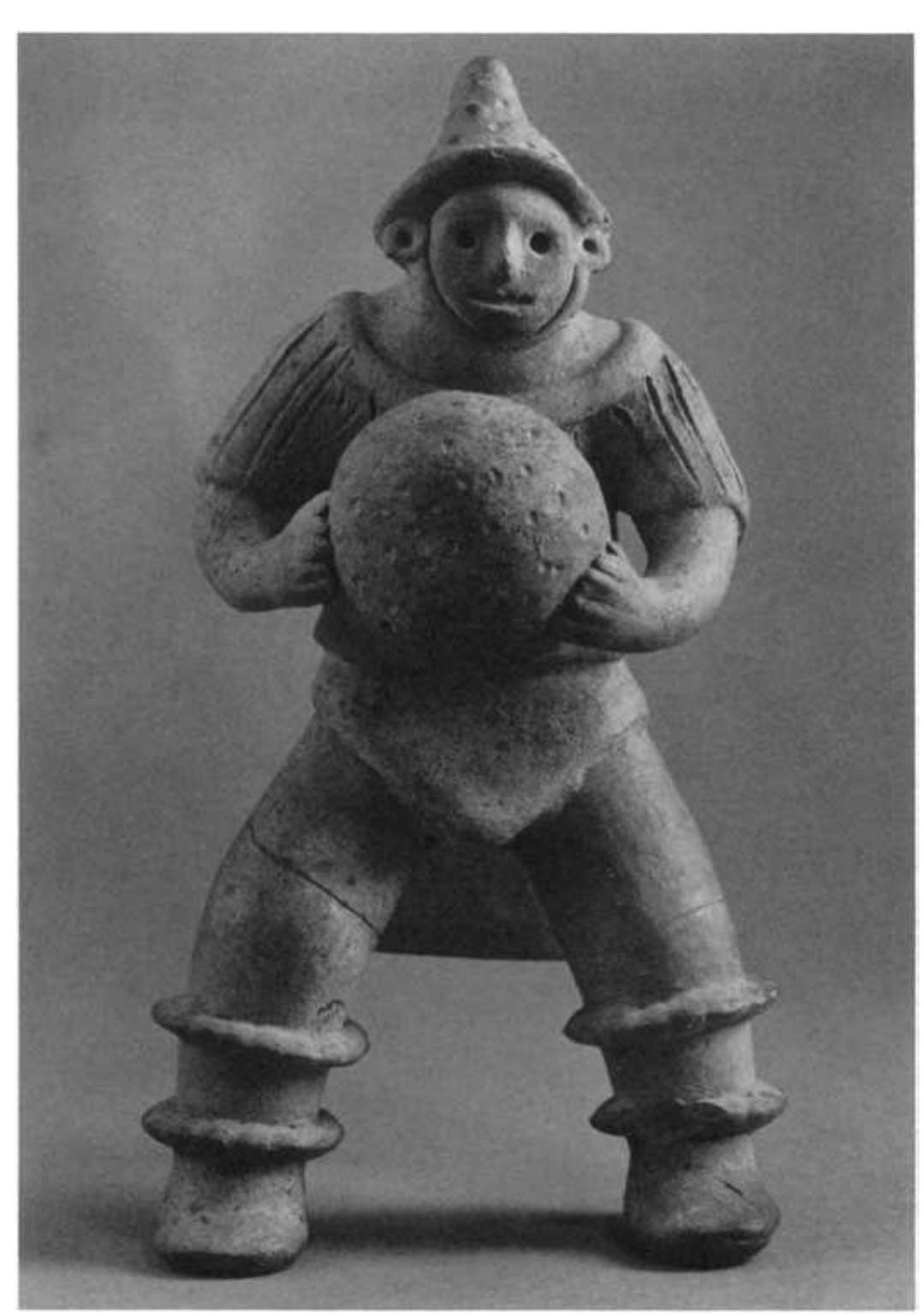
This figure, with its expressive form and carefully modeled details, stands as a vivid testament to the artistry of Colima sculptors and the enduring cultural importance of the Mesoamerican ballgame.



